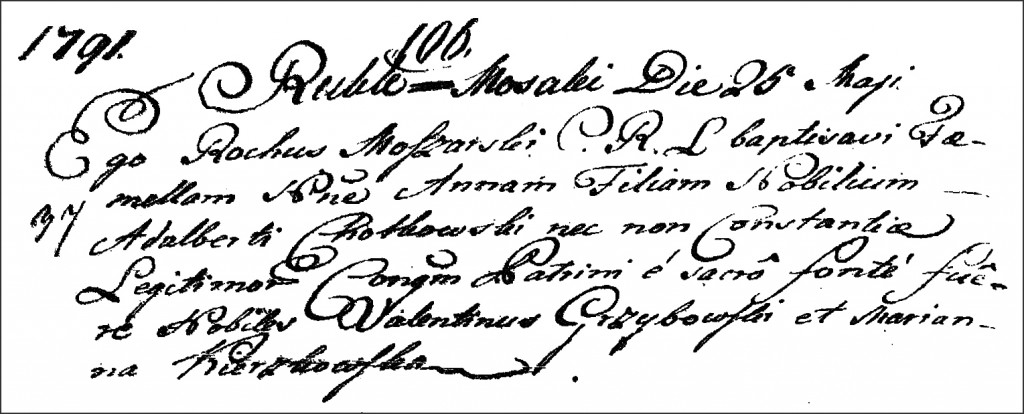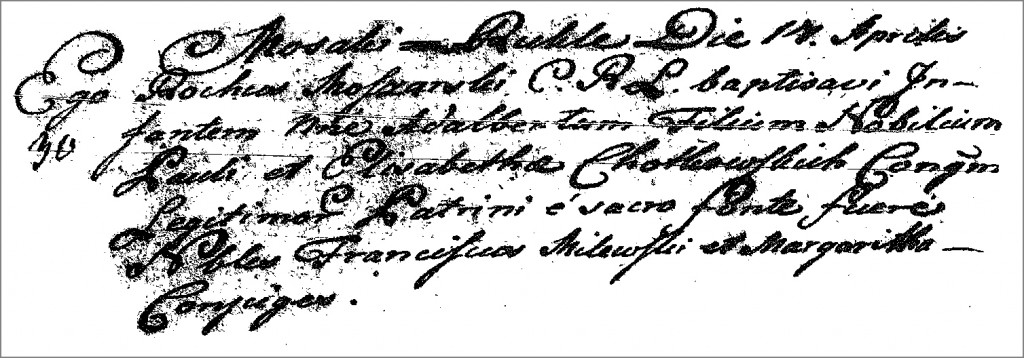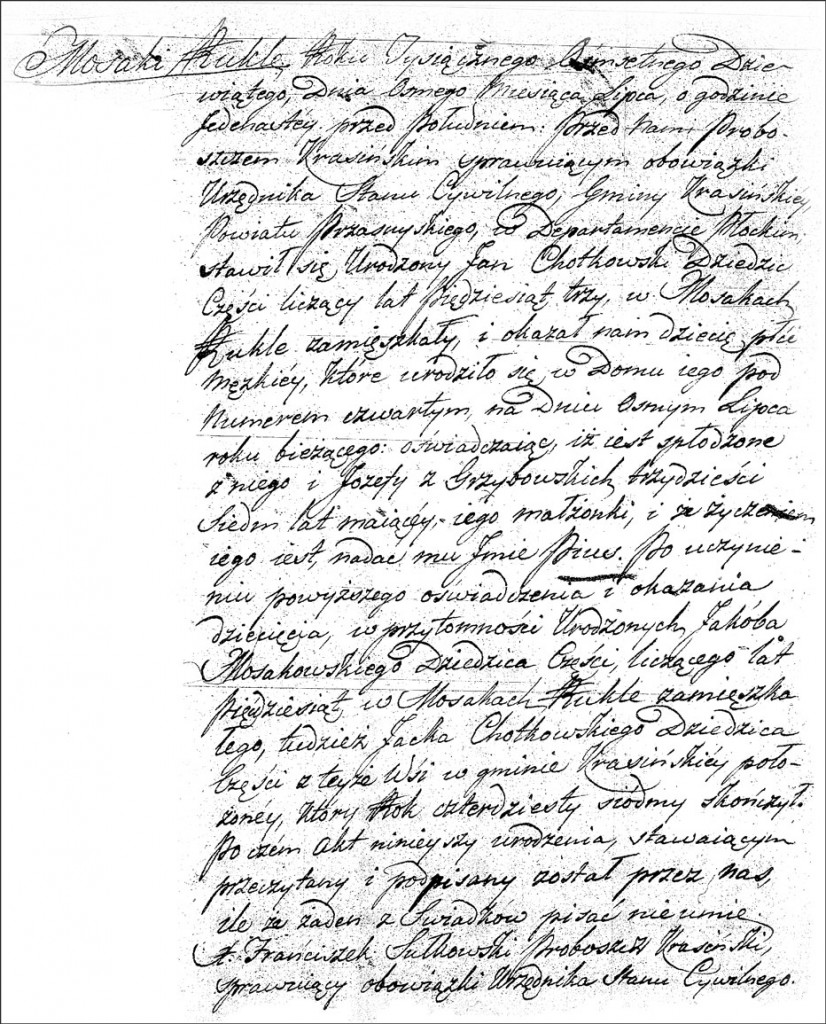Maciej Chodkowski, son of Paweł Chodkowski and Elżbieta Ostrowska, died on about 17 May 1790 in Mosaki-Rukle, Ciechanów Land, Mazovian Voivodeship, Polish-Lithuanian Commonwealth. He was buried in the parish cemetery in Krasne, Ciechanów Land, Mazovian Voivodeship, Polish-Lithuanian Commonwealth on 17 May 1790.
SOURCE: Parafia pw. św. Jana Chrzciciela (Krasne, Ciechanów Land, Mazovian Voivodeship, Polish-Lithuanian Commonwealth), “Akta zgonów 1778-1808. [Death Records 1778-1808.],” folio 49 verso, Maciej Chodkowski, 17 May 1790; filmed as Księgi metrykalne, 1657-1809; FHL INTL microfilm 1,496,578, Item 1.
Click on the image above to view a higher resolution image. Click on the link for a PDF copy of the Death and Burial Record of Maciej Chodkowski – 1790. Translated from the Latin, the record reads:
Mosaki-Godacze – 17 May [1890]
A child by the name of Mathias, one year old, died, son of the Nobles Paweł and Elżbieta Chotkowski, and was buried. 2.
Maciej Chodkowski was my first cousin 5X removed. The notation “2.” at the end of the record indicates that the family paid 2 złoty for the burial.
The record states that the child was 1 year old when he died, but I could not find a birth and baptismal record for this child. In fact, this was the second son that Paweł Chodkowski and Elżbieta Ostrowska named Maciej. The first was born on about 27 February 1788 and died three months later on 04 June 1788. The child named in the present death and burial record was born in about 1799, at which time the parents reused the name Maciej.
Copyright © 2009 by Stephen J. Danko













